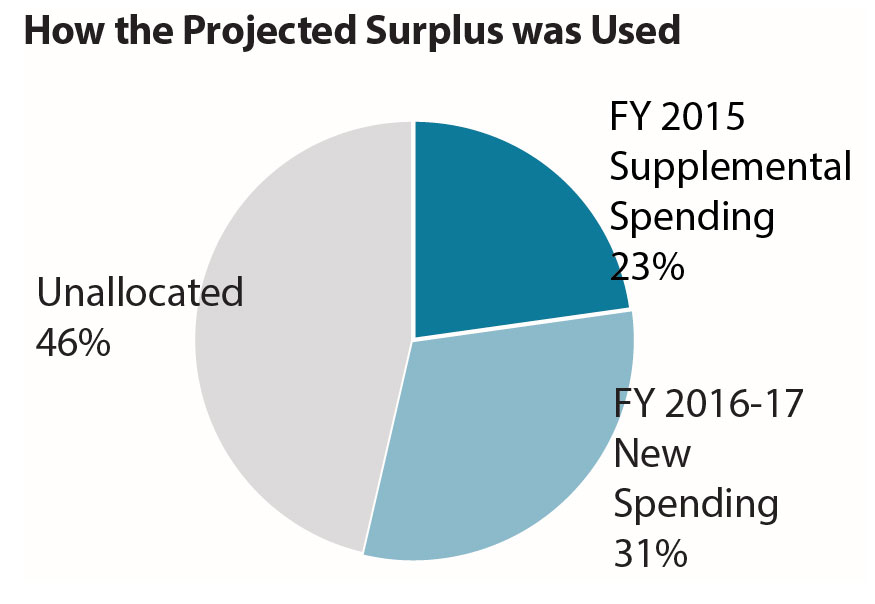With an almost $2 billion projected surplus to work with in setting the next two-year budget, policymakers had opportunities to make targeted new investments after more than a decade of flat or declining funding in many public services. However, there was also a threat that policymakers would pass large tax cuts that would crowd out such investments, and harm the state’s ability to sustainably fund our needs.
We’ve taken a closer look at this session’s tax and budget decisions in our latest issue brief, Opportunities Missed and Taken in the 2015 Legislative Session. In particular, we measured how well the final budget meets the goals of increasing opportunity and economic well-being for all Minnesotans and ensuring a fair and sustainable tax system.
With a divided government, policymakers offered very different views of how to best serve Minnesotans, and it took a special session before they reached agreement on all parts of the budget. The final budget agreement allocated 23 percent of the surplus for supplemental spending in the 2015 fiscal year, and 31 percent for additional spending in the FY 2016-17 budget cycle. That left $865 million unallocated, which will contribute to the resources available in the 2016 Legislative Session.

In the final budget agreements, policymakers made some important progress toward shared economic prosperity, like increasing access to affordable child care and keeping down the cost of higher education.
However, there were also serious lost opportunities, such as the failure to expand earned sick time to more Minnesota workers; to allow all Minnesotans to have the economic opportunities that come with a driver’s license regardless of their immigration status; or to expand tax credits for working families, such as the Child and Dependent Care Tax Credit and the Working Family Credit. And some Minnesota families will face higher costs for health care because of severe cuts to MinnesotaCare.
Policymakers also did not pass a tax bill or fund significant new investments in transportation, despite much attention and debate on these issues. Importantly, the dangerously large tax cuts that were proposed are likely to be debated among policymakers again next year.
The substantial amount of the surplus left unallocated, combined with recent positive news about state revenues, makes it highly likely that Minnesota will have another surplus when the 2016 Legislative Session starts next March. Key priorities should be continuing the state’s progress toward a sustainable and equitable tax system, opening windows of economic opportunity to more Minnesotans, and ensuring that Minnesotans who hit a rough patch have the support they need.
For more on the 2015 Legislative Session, check out our brief.
-Clark Biegler